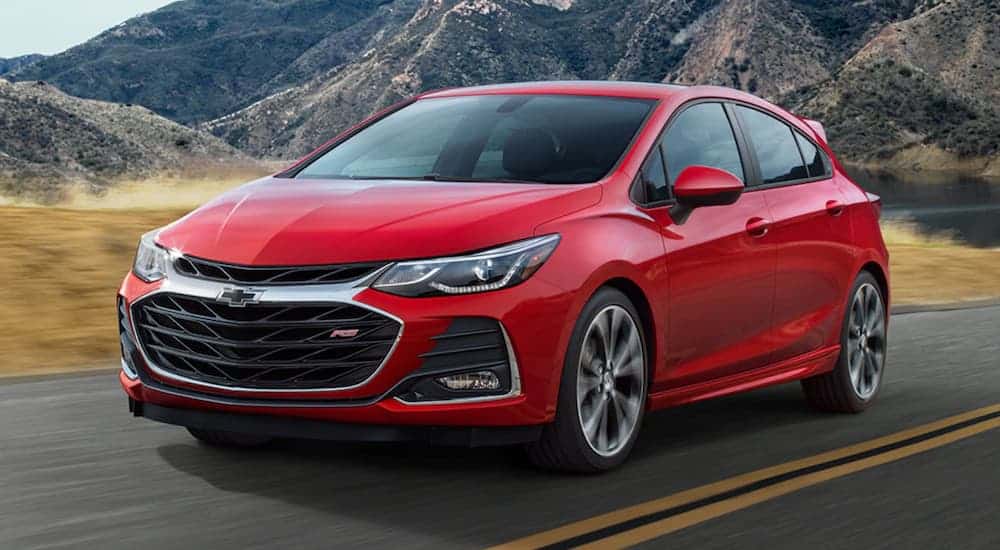Car buying can be a stressful situation if you’re not prepared for it. Walking about the dealership lot, looking at hundreds of cars, trying to do calculations in your head, it’ll make your head spin if you’re not exactly sure what you’re doing. However, it doesn’t need to be difficult. In fact, it should be both fun and exciting. You’ll soon be sitting behind the wheel of your new car. Packed with new features, a new driving experience, and even a new stereo to adjust, it should be a thrilling time. You just need to properly prepare yourself before heading out to a GM, Buick, or Chevy dealer. To help, here are a few car-buying tips for performing both prior and during any visit to the dealership.
Research Research Research
Probably the biggest blunder car buyers perform is not doing their research. Yes, they might have a general idea of the kind of car they want, but beyond that, they go in blind. That’s never a good idea. Why would you want to pay a substantial amount of money without knowing what you’re buying? When it comes to spending this kind of money, you should never buy anything without first doing your research.
Research is more than knowing the MSRP of the car before heading in. The listed MSRP on the manufacturer’s website will likely not be the price you end up paying anyway. There are transportation fees, and other prices that will be added, not to mention the vehicle on the lot likely has added trim and options beyond the entry MSRP. So while having an understanding of what the vehicle should cost is important, there’s much more to researching the car.
You need to have a clear understanding of what you want in a car. Do you want good fuel economy? Safety features? Is 4-wheel-drive something you’re interested in? Do you want maximum cargo space, or maybe a nice sound system? Research all of this before going to the dealership. This way, you can remove possible vehicles from your list ahead of time.
Look Around

If you’re looking for a Chevy Impala, don’t just stop at the first Chevy dealer and buy the Impala from them. Shop around. You might find a different dealership on the other side of town has a better price. Maybe you have a working relationship with one particular dealership. You’ve bought a few cars from them in the past and like the way they work with you. So you want to give them your business, but a different dealer is offering a better price. You can take that price, go back to the original dealer, and ask them to beat it. There’s nothing wrong with a little competition to drive the price down. It may end up saving you some serious cash.
Only Consider The Purchase Price
Loan numbers can be made to look attractive. But when a loan is extended out over 72 months instead of 48 months, it probably isn’t all that much of a deal. So don’t be swayed by lower monthly payments. Know the purchase price, and then, when negotiating the price, don’t focus on lowering the monthly payment. Focus on lowering the purchase price. And ask about what kind of costs are going into the purchase price. Some dealers will add on everything from delivery fees, taxes, car prep, lot rental charges, and who knows what else. Ask for a very specific explanation of the costs. The fact of the matter is a dealership wants your business. While there likely is a price point they can’t go under if you find out there are a lot of rental fees (or something along those lines), chances are the dealership would rather waive that fee then have you walk out on buying the car.
Financing Options
Having financing options is always good. Most dealerships will offer to finance. Often the financing a dealership can provide is better than what your bank or credit union offers, but not always. You may find your banking institution can offer better interest rates than what the dealership can. Due to this, it is a good idea to talk with your bank and find out what you qualify for and how much the bank is willing to lend you.
Even if you don’t end up using the bank, knowing how much it qualifies you for is helpful. This is the amount of money a bank believes you can comfortably payback. A dealership might try to qualify you for more. That might be tempting, especially if it means you can go for the top trim package instead of an entry-level trim, but in terms of what you can afford long-term, it’s often better to go with the bank numbers. This way, you won’t overspend.
Test Drive Your Vehicle

So you’ve done your research, you’ve looked over possible vehicles, visited dealerships, and have found a particular model you are interested in. Everything about it is nice. Naturally, you should test drive it. However, far too many car buyers drive the vehicle around the block, are impressed, and that’s that. Don’t be that car buyer. The fact of the matter is yes, the car will probably feel nicer than your old car. After all, it’s probably a few years newer, and there have been several improvements implemented since your last vehicle purchase (even if it’s the same make and model). Instead, you need to perform a test drive and pay attention to specific features beyond how the stereo sounds.
First, when the vehicle is idling, turn down the vehicle, and listen. How does it sound? Is it kind of clunky? Does it stutter? It should be quiet. If there is anything more than a subtle purr of the engine, there might be something wrong with the particular car, or the model itself may have some manufacturer issues.
From here, look out for blind spots. Adjust the mirrors to fit your driving needs and look around. Some vehicles have massive blind spots. So look for these.
As you drive, how does the vehicle handle? Is it smooth and respond to your turns and braking? Or does it feel sluggish or rough? Does the car amplify every bump on the road? You need to concentrate on all these features. Also, while you’re driving, check the controls. Can you reach the radio settings without reaching and taking your eyes off the road? Maybe your arms are too short to handle a particular vehicle properly. Or maybe your arms and legs are too long to fit comfortably behind the wheel. Do you really want to deal with this kind of problem for the next five years? Probably not.
Buying The Right Car For You
When it comes to buying the right vehicle, visiting a dealership doesn’t need to be stressful. As long as you put in your research, know the price points, and focus on the final cost of a vehicle and not simply the monthly payments, you will both find a vehicle that fits your needs and a vehicle that fits into your budget. Always remember you hold all the cards when buying a car because it is the dealer that wants to do business with you, not the other way around. So stick to your guns, know what you’re looking for, and from there, you’ll end up with the perfect car for you.



